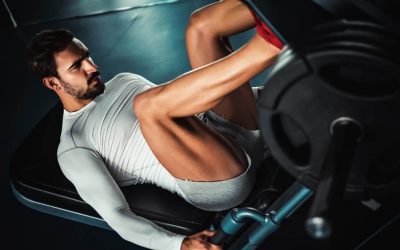
Do you often feel exhausted rather than energised after a run? Have you experienced muscle soreness or stiffness that takes days to recover from? That could be a result of skipping cooldown activities and stretches.
Make time for cooldown activities and stretches
We get it. You have errands to run, social obligations to fulfill, and TV shows to binge watch. But there are some very good reasons not to skip cooldown movements and stretches, and claiming you don’t have time to do some stretching after exercising seems like, well, a bit of a stretch. Post-run exercises won’t take more than 10-15 minutes.
We’ve previously debunked the myth that pre-run stretches are important. Long story short, stretching before your run isn’t just unnecessary, it also increases the likelihood of injury before an exercise. But doing stretches after a run is essential.

Here are some excellent benefits of cooling down:
Speedier recoveries
Cooldown movements help recover your heart rate and return your body to a balanced and steady state of rest. They also restore your breathing rates and gradually cool down your body’s temperature.
Your post-run activities could include low-intensity exercises such as a light jog, a brisk walk, or lunges, all of which use the full motion of your body but don’t cause great strain on your already tired muscles.
Better blood flow
Running makes your heart beat at a much faster rate, which means it has to work harder to circulate oxygenated blood to your lower extremities and back into your upper body. When you stop abruptly and don’t allow your body to transition from moving very fast to moving much slower, blood pools in the lower body, which causes lightheadedness.
By doing post-run exercises, which helps return your blood circulation back to a normal level, you can save yourself from an unexpected visit to the emergency room from fainting or dizziness.
Reduced stress levels
Post-run exercises also help you soak in the endorphins, or feel-good hormones, that your body releases after an exercise, which are responsible for making you feel relaxed and reinvigourated. Moreover, performing a post-run routine enables your body to regulate itself and conditions it for future runs and exercises.
Prevent muscle soreness and future injury
A condition called Delayed Onset Muscle Soreness (DOMS) occurs after strenuous exercises that cause mini-tears in muscles. It’s an inevitable part of exercising and doesn’t often lead to serious discomfort or pain. Nevertheless, there are instances when it can be debilitating and prolonged.
Skipping a cooldown after running can cause your muscles to feel sore and stiff. It can also affect your ability to move, which is why moving through every available range of motion after a run is important. Other than helping your muscles relax, static stretches, lunges, twists and other light exercises help prevent this and similar injuries.
How a personal trainer can help
As with most forms of exercises, cooldown movements and stretches require proper form to be effective. Getting the help of a professional trainer not only ensures you’re doing exercises the right way, you also get sound recommendations for more effective activities that can spice up your post-run routine.
BodyScene offers a range of programmes that include post-run activities you can incorporate into your regular workout. We can recommend activities that require minimum effort but yield maximum gains. Schedule a fitness programme with our trainers today!



